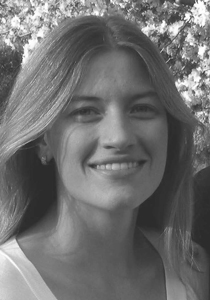Citation
In a warming world, snow is a threatened resource, yet the dynamics of this threat are quite complicated, as evidenced by the 2015 record low snow along the west coast of the United States with simultaneous record high snowfall across the northeast coast. Scientifically, the diminishing snowpack has been well documented with numerous publications, but the authors generally split into two groups: those who specialize in snow processes (yet are not experts in atmospheric circulation and climate change) and those who specialize in atmospheric and/or climatic factors (yet are not experts in snow). Sarah’s key contribution to cryospheric science and to society is her deep understanding of both fields. She bridges the gap rigorously in her publications and her communication to both scientists and the general public.
All of Sarah’s work demonstrates a balanced approach to reconciling controversial problems dealing with snow and climate change. She presents clearly all sides of each issue (including the strengths and weaknesses of available observational data sets and models) and ties in the observations and model analysis with what we know physically and theoretically to move the science forward productively. In this way, all of her publications demonstrate that prior results (which at first glance may appear contradictory or ripe for climate skepticism) when taken together tell a coherent story—there will be “winners and losers” in snow accumulation in complex terrain because of combinations of orographic precipitation enhancement, warming temperatures (where areas with temperatures well below freezing will be much less sensitive than areas with temperature close to freezing), and atmospheric circulation shifts. Each of her publications provides guidance to where the community’s efforts should be focused to answer pressing societal questions about changing snow and water resources.
In addition, Sarah takes considerable effort to communicate her work effectively to a much broader scientific and public audience than the snow hydrology community. Her ability to convey the widespread importance of her work is exemplified by Kapnick et al., published in Nature Geoscience (2014, doi:10.1038/ngeo2269). This paper, in addition to its scientific importance, presented cutting-edge snow hydrology research in a high-profile forum, which is very unusual for the discipline.
It is clear that Sarah not only is an accomplished scholar but is emerging as a key figure in identifying where the research needs to go and exhibiting substantial influence on the field of snow hydrology. She is clearly an emerging leader in the science of snow hydrology.
Previous American Geophysical Union Cryosphere Early Career Award winners have become leaders in their field, and Sarah has clearly demonstrated herself to be very deserving of this recognition and to be counted among the ranks of emerging leaders in the cryospheric sciences
—Robin E. Bell, Lamont-Doherty Earth Observatory, Columbia University, Palisades, N.Y.
Response
Thank you, Robin, for your kind words. I am deeply honored to receive the Cryosphere Early Career Award and thank the National Snow and Ice Data Center for their generous monetary support of it. I am humbled to join the ranks of the previous accomplished awardees.
Throughout my career I have been fortunate to have many people who have stimulated my research and nurtured my creativity and must be thanked here. My Ph.D. adviser, Alex Hall, first suggested I look at California snowpack and has always given me advice and served as a sounding board for my ideas. My postdoctoral adviser, Thomas Delworth, helped me develop as a scientist and still emboldens me to take risks. Jessica Lundquist, Jeff Dozier, Gabriel Vecchi, Elena Shevliakova, George Philander, and Mimi Hughes have all provided support at important stages of my career. My collaborators have all helped take me in new directions. I would also like to thank my family, especially my husband and daughter, for their encouragement and for reminding me that there is a human aspect to my work.
Receiving this award serves as motivation to continue to uphold its legacy and push myself as I conduct my research. I hope I can live up to its significance.
—Sarah B. Kapnick, Geophysical Fluid Dynamics Laboratory, National Oceanic and Atmospheric Administration, Princeton, N.J.
Citation: AGU (2015), Kapnick receives 2015 Cryosphere Early Career Award, Eos, 96, doi:10.1029/2015EO035209. Published on 11 September 2015.
Text © 2015. The authors. CC BY-NC 3.0
Except where otherwise noted, images are subject to copyright. Any reuse without express permission from the copyright owner is prohibited.

